Search Results
Back to JTS Torah Online's Main page
Playing Hide and Seek with God
Mar 15, 2024 By Cecelia Beyer | Commentary | Pekudei
Our quest for the Divine is not a new one; we’ve been playing “hide and seek” with God since we left Egypt. In Parashat Pekudei, our ancestors also strove to come close to the Divine Presence, through assembling and dedicating the Tabernacle as a place for encountering the Divine: “When Moses had finished the work, the cloud covered the Tent of Meeting, and the Presence of Adonai filled the Tabernacle” (Exod. 40:33–34). The dedication of the Tabernacle, God’s “dwelling place” on earth, was completed as God’s Presence filled and rested upon it
Read More
Making Space for God’s Presence
Mar 17, 2023 By Kara Tav | Commentary | Pekudei | Shabbat Hahodesh | Vayak-hel
Our rededication of the hospital’s ICU echoed for me the original Jewish sacred space described in the Book of Exodus. The double Torah reading for Vayak-hel and Pekudei provides God’s blueprint for a traveling sacred space that the Israelites would build during their journey through the wilderness. As they travelled, they would carry a place for the presence of God and for revelatory encounters between God and the high priests on behalf of the people. It would be a space for doing sacred work and for being with God.
Read More
Can You Rival and Respect Your Teacher?
Mar 4, 2022 By Matthew Berkowitz | Commentary | Pekudei
Parashat Pekudei brings the Book of Exodus to a close. Strikingly, Exodus opens with the loss of one home as the Israelites descend into Egyptian enslavement, and that same book closes with the festive completion of another home, the Mishkan or Tabernacle that is the dwelling place of God’s presence. As Pekudei opens we are reminded that the Tabernacle project, far from being the work of one person, involves the entire Israelite “village”—God, Moses, Israelite craftsmen, and Israelite donors. Still, most significantly, we are reintroduced in this Torah reading to the master artisan of the Tabernacle and its appurtenances, Bezalel.
Read More
Holy Bling
Mar 12, 2021 By Amy Kalmanofsky | Commentary | Pekudei | Vayak-hel
I loved rummaging through my grandmother’s jewelry. To my child’s eye, her jewelry box was a treasure chest filled with sparkling gems, pearls, and gold. All “paste,” I learned, but to me they were the crown jewels.
Read More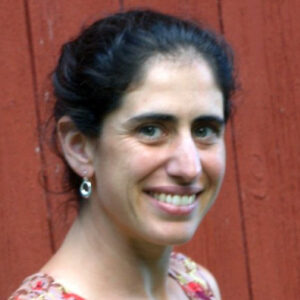
Those Whose Hearts Lift Them
Mar 18, 2020 By Nicole Wilson-Spiro | Commentary | Pekudei | Vayak-hel
When I lived in South Philly, I fell in love with the Mummers, an annual parade and show on New Year’s Day and part of the fabric of the neighborhood throughout the year. Mummers dress in elaborate costumes and “strut” down Broad Street, while playing music and handing out beaded necklaces and New Year’s greetings to enthusiastic crowds. While some Mummers merely enjoy the opportunity to cavort in silly costumes in various stages of drunkenness, other Mummers clubs are intensely competitive, guarding the secret of their yearly themes with a vengeance and working throughout the year to prepare a spectacle.

Entering the Clouds of Glory
Mar 8, 2019 By Daniel Nevins | Commentary | Pekudei
“What do you mean, Rabbi? The clouds are mysterious—it’s like being on Sinai!” This statement by a rabbinical student consoled me several years ago on the summit of Giant Mountain in the Adirondacks. Each fall I take a minyan or so of students hiking for the weekend, and on that day, we had spent many hours climbing this enormous peak. On the way up, we enjoyed stunning views—of an alpine lake called “the Giant’s Washbowl” and the Great Range looming across the valley to our south. But when we reached the top of Giant a thick cloud had parked itself on the summit and would not budge. Visibility was limited to about ten feet, and wisps of mist skimmed between us.
Read More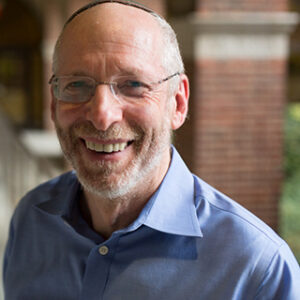
The Give and Take of Strength
Mar 9, 2018 By Eliezer B. Diamond | Commentary | Pekudei | Vayak-hel
Rituals of closure are common in both the secular and religious realms. An example of the first is the sounding of retreat and the lowering of the flag marking the end of the official duty day on military installations. An instance of the second is the siyyum, a liturgical ritual and festive meal that is occasioned by the completion of the study of a Talmudic tractate. Closure rituals relate not only to the past but to the future as well. On the one hand, the temporal demarcation of a past event facilitates the emergence of its distinct identity, internal coherence, and significance, thereby providing insight, understanding, and, at times, a sense of accomplishment. At the same time, by declaring an end, a closure ritual creates space in which one can—and must—begin anew; the past is to be neither prison nor refuge.
Read More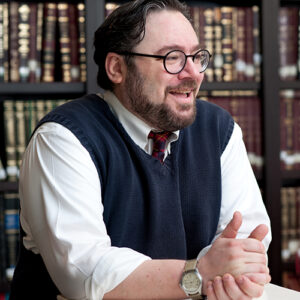
The Sanctuary and the Bomb
Mar 24, 2017 By Marcus Mordecai Schwartz | Commentary | Pekudei | Vayak-hel
The US gave the codename “Ivy Mike” to its first full-scale experimental thermonuclear device. Designed by of two the century’s most significant nuclear scientists, Stanisław Ulam and Edward Teller, Mike’s design was a strangely beautiful one. As historian Richard Rhodes wrote in Dark Sun: The Making of the Hydrogen Bomb: “Steel, lead, waxy polyethylene, purple-black uranium, gold leaf, copper, stainless steel, plutonium, a breath of tritium, silvery deuterium effervescent as a sea wake: Mike was a temple, tragically solomonic, invoking the powers that fire the sun.”
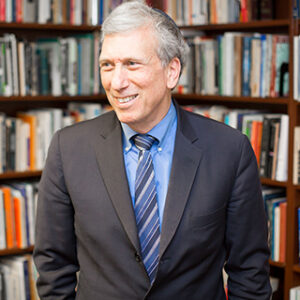
Wonderment and Order: A Path to the Heart
Mar 24, 2017 By Arnold M. Eisen | Commentary | Pekudei | Vayak-hel
The Baal Shem Tov posed a question about Parashat Pekudei that I too find most puzzling. Why are we told over and over again—10 times in the course of Exodus chapters 39–40, by my count, in addition to a declaration at the start of Parashat Vayak-hel (35:4)—that the Israelites did all they did for the Tabernacle, gave what they gave, built what they built, “as the Lord had commanded Moses.” Why not just tell us once, at the end of the account, that all they did was done in this way, for this purpose?
Read More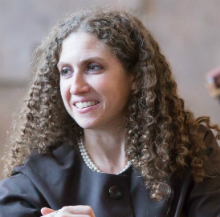
Creating I-Thou Moments That Strengthen Relationships, and Communities
Mar 18, 2016 By Stephanie Ruskay | Commentary | Pekudei
Semikhah, ordaining of clergy, is on my mind these days as we move closer to my first JTS ordination as an associate dean. No longer the person receiving semikhah, this time I am privileged to help ordain new clergy.
Read More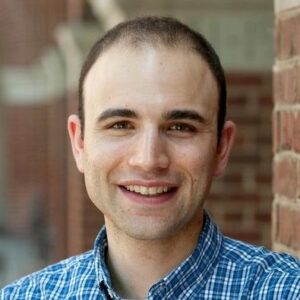
The Call to Find a Mentor and to Mentor Others
Mar 11, 2016 By Mark Young | Commentary | Pekudei
In parashat Pekudei, the Israelites are on a journey to a new life, having escaped the Egyptians, experienced the revelation at Sinai, and completed the building of the Tabernacle. They are now in the wilderness, sometimes unclear about their direction, sometimes filled with fear, and in need of guidance. However, they had mentors to guide them. They had the cloud that indicated the Presence of God, and they had Moses on their side.
Read More
With God, It’s Complicated . . .
Mar 11, 2016 By Rami Schwartzer | Commentary | Pekudei
For a story that began with the promise of intimacy, I had hoped for a happier ending.
Read More
The Artist’s Insight
Mar 13, 2015 By Lilly Kaufman | Commentary | Pekudei | Vayak-hel
From October of last year until mid-February, the Museum of Modern Art in New York City, in collaboration with Tate Modern in London, featured a comprehensive exhibition entitled Henri Matisse: The Cut-Outs. It was a reassessment of Matisse’s colored paper cut-outs, which, according to the program notes, “reflect…a renewed commitment to form and color, and . . . inventiveness”. Matisse himself said, “For me, a colour is a force. My pictures are made up of four or five colours that collide with one another, and the collision gives a sense of energy.” (Sooke, Henri Matisse: A Second Life, pp. 97-98.)
Read More
Nediv Lev
Mar 13, 2015 By Michael R. Boino | Commentary | Pekudei | Vayak-hel
We often think of love as something comfortable, something comforting. The truth is, it can be the exact opposite. True, unbounded love from another source can cause us to confront parts of ourselves with which we are uncomfortable: our vulnerability, our self image, our passive role as the recipient of care rather than as a caregiver.
Read More
The Power of Partnership and Positive Thinking
Feb 26, 2014 By Matthew Berkowitz | Commentary | Pekudei
The raising of the Tabernacle was a daunting task for the Israelites.
Read More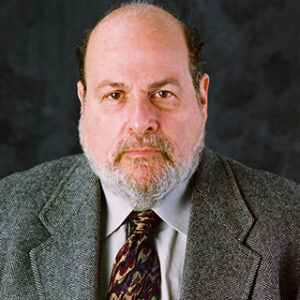
Offerings As Devotion and Redemption
Feb 25, 2014 By Stephen A. Geller | Commentary | Pekudei
Parashat Pekudei ends with a tremendous scene, one of the highlights of the Bible: the divine Glory, the kavod, comes down from heaven and settles into the newly completed Tabernacle so that Moses cannot enter it.
Read More
Meaning in Métier
Mar 6, 2013 By Abigail Treu | Commentary | Pekudei | Vayak-hel
The midrash suggests that the building of the Mishkan (Tabernacle) was given not because God needed such a thing, but to show the world—Israelites included—that the Israelites had been forgiven for the sin of the Golden Calf. It is curious, though, that such a gesture would be given as a do-it-yourself assignment.
Read More
Of Leadership and Investment: A People Engage
Mar 6, 2013 By Matthew Berkowitz | Commentary | Pekudei | Vayak-hel
Parashat Vayak-hel-Pekudei continues the building of the Tabernacle—detailing the materials, craftsmanship, appurtenances, and its completion.
Read More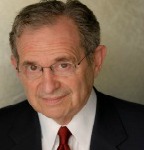
How Now, Brown Cow?
Mar 17, 2012 By Leonard A. Sharzer | Commentary | Pekudei | Shabbat Parah | Vayak-hel
I would like to review several components of the Red Heifer ritual that I find most challenging and ask two questions: (1) Is there any way to understand this arcane ritual that has resonance in modern times?; and (2) Why do we read this passage shortly before Pesah?
Read More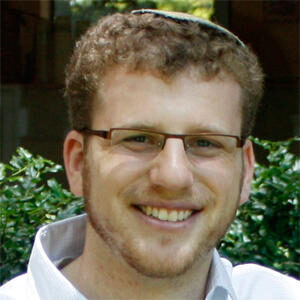
Consumption with Humility
Mar 17, 2012 By Charlie Schwartz | Commentary | Text Study | Pekudei | Vayak-hel
“You are what you eat,” as the old adage goes—but according to this midrash, you are also what you build, or more precisely, you are how you build.
Read MoreSUBSCRIBE TO TORAH FROM JTS
Our regular commentaries and videos are a great way to stay intellectually and spiritually engaged with Jewish thought and wisdom.




